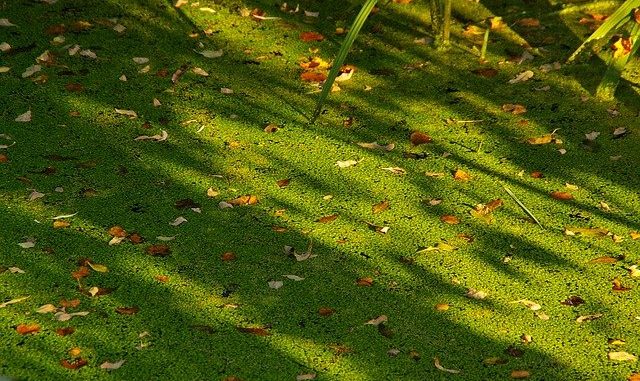
Duckweed is small floating plant found on ponds and slow-moving streams. What is attracting attention though is its ability to double its mass every 16 to 24 hours. That growth rate suddenly makes it extremely attractive to food producers looking for a rapidly growing protein food that might just feed a rapidly growing population (Journey et al., 1993).
Yes, the global population is steadily and inexorably growing. Whilst animal-derived proteins are extremely popular the sobering fact is that it is probably unsustainable as a food source because of the need to feed so many in the future at the cost of the environment. Livestock maintenance and food for fish also demands increasing amounts of plant food too.
With all the issues facing a growing world population, any means to identify a new plant source is extremely pressing. Duckweed may be a plant that goes some way to meeting the demands for a rapidly growing, easily grown foodstuff.
The idea of using duckweed goes back to the late 70s and was even thought of earlier but it began to attract more funding in the 90s (Journey et al., 1993).
Duckweed is a rather non-specific term for a range of plants found in four genera. These are Lemna, Spirodela, Wolfia and Wolfiella. There are about 40 species and the number is still growing. It grows as a small aquatic floating plant that forms thick, blanket-like mats on very still but nutrient-rich fresh and brackish water. They are monocotyledons in the botanical family Lemnaceae. They are not algae but higher plants.
These plants grow at temperatures between 6 and 33 °C (Leng et al., 1995). They are found throughout the world except in the extreme north or south because the temperature drops regularly below freezing. If the temperature is too cold, the plant will deal with the situation by forming what is called a turion and the plant sinks to the bottom. It remains dormant and when the water temperature rises, it floats back up and resumes its normal growth. They are not found anywhere
Duckweed grows by mainly vegetative division. An individual leaf passes through 10 divisions in as many days to several weeks.
The annual dry mass yield of duckweed with good agronomic care can be between 10 and 30 tonnes per hectare (Haque, 1998). Journey et al., (1993) even earlier claimed 4 MT/day was possible. Those are useful figures to have in mind when considering a possible plant foodstuff.
Duckweed has been identified as a great substitute for vegetable proteins in cereal grain diets. A number of investigators of animal feed sources started looking at duckweed for feeding poultry. Young chickens and pigs have been fed using duckweed as an energy and protein source. It is slightly less effective than soyabean meal
Researchers in Bangladesh for example examined the replacement of sesame oil cake with the duckweed species, Lemna minor (Ahammad et al., 2003). Sesame oil meal has long been considered as a suitable alternative feed for broiler chickens. Unfortunately it suffers from having a high phytic acid content which means it binds calcium too readily reducing its availability for growing chicks and indeed any other livestock that might be fed on it. It’s also low if not deficient in the important essential amino acid lysine. There also seems to be issues with adulteration of sesame seed oils and the cake too.
References
Ahammad, M. U., Swapon, M. S. R., Yeasmin, T., Rahman, M. S., & Ali, M. S. (2003). Replacement of sesame oil cake by duckweed (Lemna minor) in broiler diet. Pakistan J. Biol. Sci, 6, pp. 1450-1453.
Akter, M., Chowdhury, S. D., Akter, Y., & Khatun, M. A. (2011). Effect of duckweed (Lemna minor) meal in the diet of laying hen and their performance. Bangladesh Res. Pub. J, 5(3), pp. 252-261.
Islam, K. M. S. (2002). Feasibility of duckweed as poultry feed-A review. Indian Journal of Animal Sciences, 72(6), pp. 486-491.
Leng, R. A., Stambolie, J. H., & Bell, R. (1995). Duckweed-a potential high-protein feed resource for domestic animals and fish. Livestock Research for Rural Development, 7(1), 36.
Leave a Reply